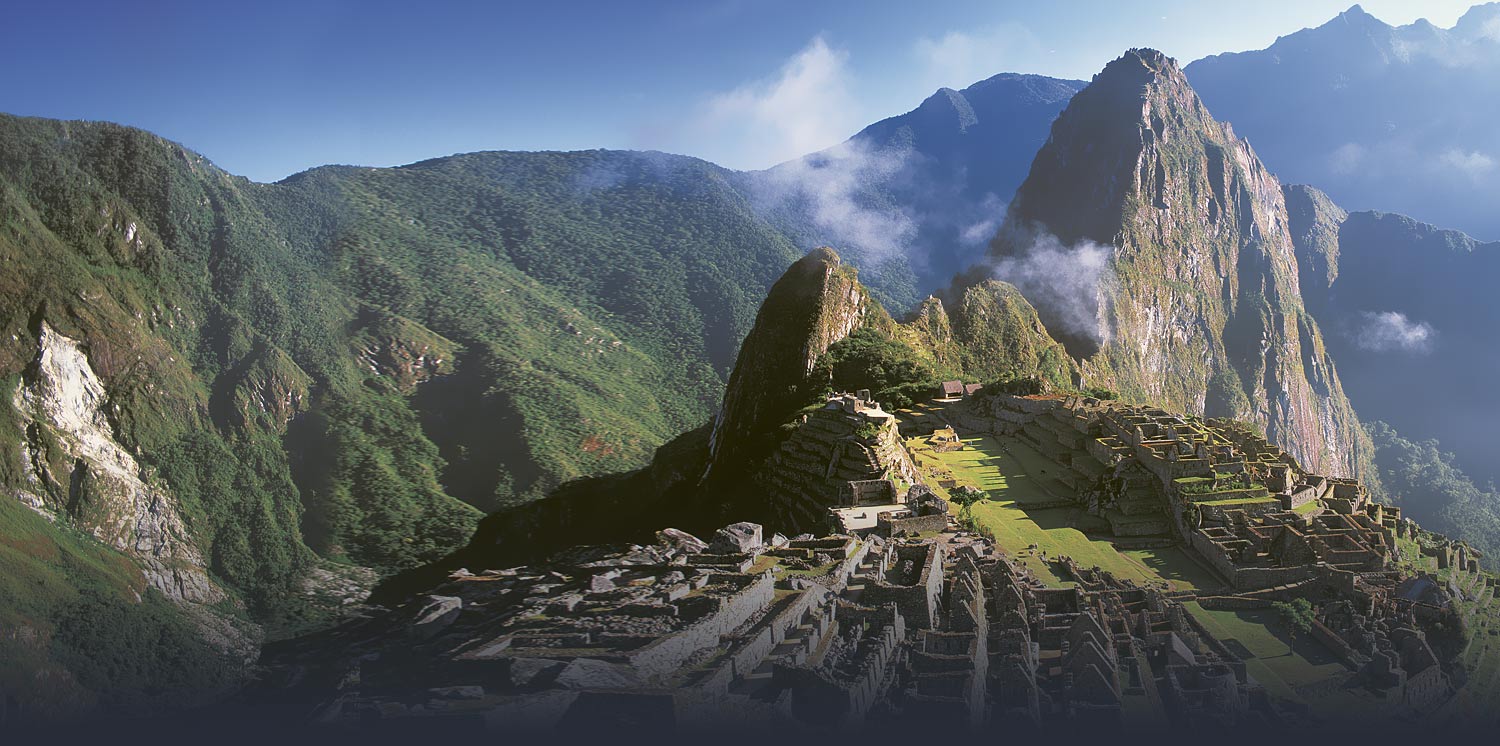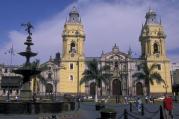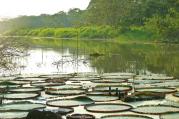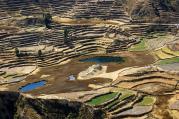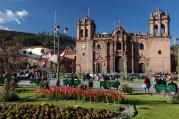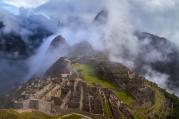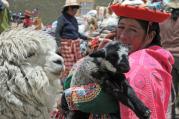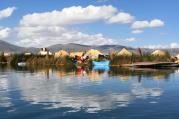Country Information Peru
| Location | ||
| Peru is the third biggest country of Latin America (surface approximately 1,3 km2) – it is situated in the Northwest, south of the equator. The country borders on Ecuador and Colombia in the North, on Brazil and Bolivia in the East, on Chile in the South and on the Pacific Ocean in the West. | ||
| Population | ||
| Approximately 29,8 million, half of the population still consists of Indígenas, speaking Quechua or Aymara, approx. 37% are mestizos and approx. 13% whites | ||
| Capital | ||
| Lima, population approx. 9.3 million | ||
| Politics & Economy | ||
| The country is governed by a presidential democracy. Peru is an agrarian country and 50 % of the active population works in the agrarian or forestry sector or lives from fishing. Tourism is an important foreign-exchange earner of the Peruvian political economy and is sponsored emphatically by the government. | ||
| Currency | ||
| Peruvian Nuevo Sol (S./) (1 S./ = 100 céntimos) |
||
| Language | ||
| Lingua franca is Spanish, second language of the country is Quechua | ||
| Time difference | ||
| -5 hours GMT | ||
| Voltage | ||
| 220V alternating current, it is recommendable to bring a multi-adapter | ||
| Public holidays | ||
| 1. January, Good Friday, 1. May, 29. June, 28. and 29. July, 30. August, 8. October, 1. November, 8. and 25. and 31.December, Maundy Thursday, Feast of Corpus Christi | ||
| Opening hours | ||
| Official closing times do not exist; most of the shops open between 09.00h or 10.00h and close at 19.00h or 20:00h. Siesta is generally from 13.00h to 15.00h. During the summer months (January-March), banks and administrations open only during the morning; otherwise from 09.00-12.30h and from 15.00h to 18.00h. | ||
| Climate | ||
| On the coast it hardly rains and from January to March the sky is always blue. From May to November you often have the typical "garúa", a dense fog covering the sky. A temperate rather cool mountain climate is dominating in the Andes, where we have the dry season from May to November. | ||
| Best time to travel | ||
| The best time for tours through the Andean highlands is the South American winter (May till beginning of September): few rainfalls in the highlands and during the day it is sunny and warm. Temperatures go down heavily in the nights – they often reach degrees under the freezing point. Generally, the interim season is a tip for connoisseurs – from mid-September to mid-December and from mid-March to mid-May there are less tourists and one has mostly nice weather. | ||
| Clothing | ||
| Summer clothes for the warmer months and a thin sweater or coat for fresh evenings. For the Amazon region, thin summer clothes, raincoats and tight shoes are appropriate during the whole year. During the stay in the highlands, you should bring warm clothes and also medicaments against altitude sickness. | ||
| Tourist destinations | ||||||||||||||||||
|
||||||||||||||||||
| Flora & Fauna | ||
| Peru is one of the five countries with the richest biological variety and offers 28 different kinds of climate. The widest diversity of species can be found in tropic-sultry lowlands and next to the fruit slopes of the Andes. There are plenty of trees, climber and tropical flowers in Peru, but also typical desert vegetation (bushes, grass, cactus) exists in coastal areas. Also the fauna is manifold. Lamas, alpacas and guanacos are spread in the Sierra and among the animals of the tropical "Montaña" region you find jaguar, puma, armadillo, ant bear, alligator and a dozen of different kinds of monkeys. Condor, parrots and flamingo you may find in Peru. | ||
| Food & Drinks | ||
| National recipes are melting with European ones into one in the Peruvian Creole cuisine. The offer of marine food is very rich, typical is "ceviche", raw fish with lemon juice and onions. Specialities of the Peruvian cuisine are also "Anticuchos" (meat skewers with heart of beef), "Rocoto Relleno" (stuffed, tasty peppers) and "La Ocopa", cooked potatoes accompanied by a sauce made of cheese and nuts. Lovers of sweets should try the "Mazamorra morada" (thick custard-based dessert made of maize) or "Picarones" (pastries roasted in oil, accompanied by treacle). | ||
| Souvenirs | ||
| Peru is famous for its ceramic products. Crafts, as well as textiles such as scarves, ponchos, cushions or belts, bags and tapestry are characterized by the topical regional patterns. Furthermore, silver jewellery is cheap. Best places to go shopping are the traditional Indian markets. | ||
